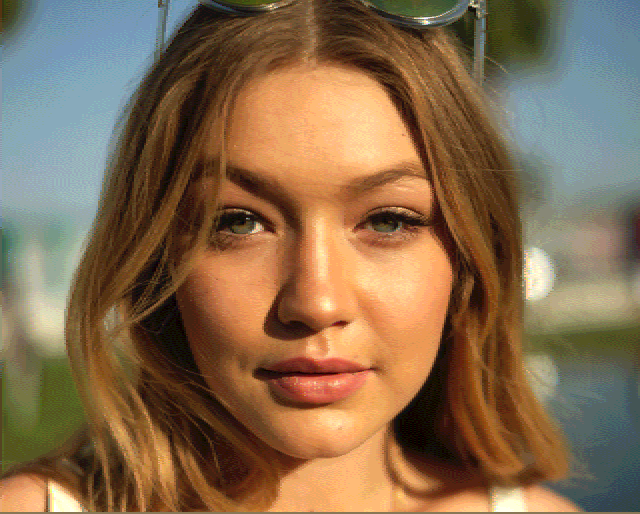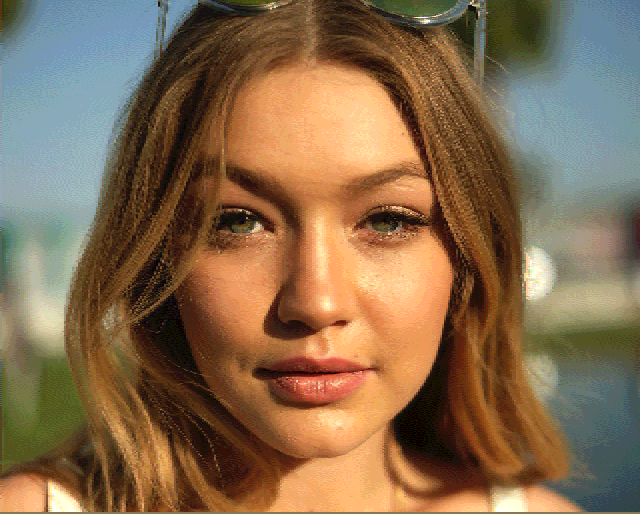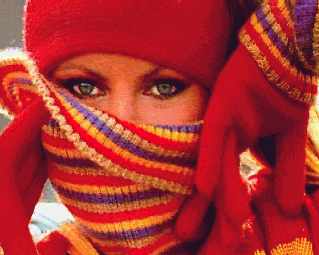
 |
|
|
#1 |
|
Registered User
Join Date: Mar 2016
Location: Australia
Posts: 881
|
HAM conversion
I have been re-learning how to program an amiga (See my progress here). When I got up to displaying a HAM image I decided to create a utility to convert png files to raw HAM bitplane and palette data. (I am cross developing on a MAC, testing in Win/FS-UAE/SAE so didn't have any programs that could do HAM conversion).
I couldn't really find much source code out there for doing HAM conversions, so wrote a simple converter myself. The source code is available in my github repository if anyone is interested. It's pretty simple, and in no-way is the best HAM converter out there, but I thought people might find it interesting. I would love any tips people have on algorithms for HAM conversion, or pointers to open source code that does a similar thing. One funny feature my program has, is a brute force attack for finding the base HAM palette. It basically tries 65536 different palette combinations and compares the difference between the generated HAM image and the original. This is obviously very slow, but the results are not so bad. Here is a sample low-res screenshot from an image I converted. This was done using the brute force palette algorithm and also has floyd steinberg dithering applied:  I think I have a bug somewhere that seems to increase the color intensity the image compared to the original, but I haven't really spent much time investigating that yet. When I next spend time on this I will probably have a go at doing a sliced ham conversion. |
|
|
|
|
#2 |
|
Registered User
Join Date: Sep 2011
Location: Paris/France
Posts: 274
|
Nice :-)
>source code out there for doing HAM conversions, See my source here (unoptimized but efficient) http://aminet.net/package/gfx/conv/DatatypeToHam Alain Thellier |
|
|
|
|
#3 |
|
son of 68k
Join Date: Nov 2007
Location: Lyon / France
Age: 51
Posts: 5,323
|
You can use my picture viewer to directly convert png to ham. It needs AGA, though, because this is HAM8 conversion only. But it's damned fast for what it does. So far only ADPro gave a significantly better visual result
 My viewer also has a ham fringe reduction system to display very large images without too much fringing to the left (you see, these horror color lines when scrolling ham images). Source code is available on request. |
|
|
|
|
#4 |
|
pixels
Join Date: May 2014
Location: Australia
Age: 52
Posts: 476
|
If we had a few (24bit images) to test, I'd be happy to try out a few programs.
I did recently convert some 24bit images to Ham6 with reasonable results. Experimenting with adding some dithering in the conversion via various tools. (PPaint, Brilliance, Photoshop, GraphX, Web Image Guru) Adding the dither helped remove some of the banding issues. |
|
|
|
|
#5 |
|
Join Date: Jul 2008
Location: Sweden
Posts: 2,269
|
It looks really good!
This often happens when you have a source image in gamma space, like a photograph, to which you apply filters that are essentially linear combinations. The solution is to de-gamma first to get the source data into linear space, filter, and apply gamma again, but I'm not sure it's that easy to solve here, where you're dithering to HAM6. |
|
|
|
|
#6 | ||||
|
Registered User
Join Date: Mar 2016
Location: Australia
Posts: 881
|
Quote:
Quote:
Quote:
Quote:
|
||||
|
|
|
|
#7 |
|
Registered User
Join Date: Mar 2016
Location: Australia
Posts: 881
|
Tried running it interlaced:
Unsure how it would look on a real amiga. On UAE the horizontal is obviously doubled to match the increase in vertical pixels, hence the 640x512 res screenshot.  Trying to buy an amiga  Harder than I thought it would be. Harder than I thought it would be.
|
|
|
|
|
#8 | ||
|
son of 68k
Join Date: Nov 2007
Location: Lyon / France
Age: 51
Posts: 5,323
|
Quote:
 Quite good if using a good monitor. HAM artifacts are less visible due to the natural anti-aliasing of CRT monitors. UAE's filters may make things better, even though i didn't investigate in this area. Quote:
EDIT: Found the image on your GitHub. Now having a closer look... Last edited by meynaf; 11 March 2016 at 09:35. |
||
|
|
|
|
#9 | |
|
Registered User
Join Date: Mar 2016
Location: Australia
Posts: 881
|
Quote:
https://github.com/alpine9000/amiga_...tools/imagecon Images are in the "assets" folder of the main repository: https://github.com/alpine9000/amiga_examples/ Direct links: 320x256: (This is the one I used for the non interlaced conversions above) https://raw.githubusercontent.com/al...ssets/gigi.png 320x512: (Used for the interlaced example) https://raw.githubusercontent.com/al...gi_320x512.png 640x512: (Only used to create the above) https://raw.githubusercontent.com/al...gi_640x512.png |
|
|
|
|
|
#10 |
|
son of 68k
Join Date: Nov 2007
Location: Lyon / France
Age: 51
Posts: 5,323
|
Looks nice in 640x512 HAM8. Maybe darker than the original, though.

|
|
|
|
|
#11 |
|
Registered User
Join Date: Mar 2016
Location: Australia
Posts: 881
|
|
|
|
|
|
#12 |
|
son of 68k
Join Date: Nov 2007
Location: Lyon / France
Age: 51
Posts: 5,323
|
It may be possible that the image suffers more from 640x512 to 320x256 downsampling than from color quantization, f.e. the hair looks quite pixelated. The eye is more sensitive to details than to colors anyway.
|
|
|
|
|
#13 | |
|
Registered User
Join Date: Jun 2010
Location: PL?
Posts: 2,743
|
Quote:
I ask due highly visible aliasing problem (and missing data) - consider to apply some AA processing before colour quantization - also HAM results may be better (less abrupt signal) http://avisynth.nl/index.php/Externa...#Anti-aliasing - this mostly for video processing but most of them give excellent results also with pictures - highly recommended! Be careful with dithering as most of typical dithering methods is not applicable to HAM directly - general dithering assume that pixels are independent where HAM due its lossy coding can't provide this requirement - as such good dithering algorithm need to have information how error will be propagated in line. To simplify this stage you may assume creating regular structure from CLUT pixels (like each 4th pixels is from CLUT) - this will limit error propagation only to at max 3 pixels and also those pictures can be pre-calculated to remove/minimize fringes. From my perspective algorithm for color selection should apply weighting (corresponding to eye perception), calculation should be performed in linear space (most of RGB sources as pointed Leffmann is non-linear and should be linearised - inverted Gamma before processing), you may also consider to perform some calculations in different than RGB color space (of course at the end of process chain you need to convert to RGB) http://www.imagemagick.org/Usage/col...cs/#processing . As HAM is limited only in horizontal direction processing can be optimized for single line and as such significantly simplified (error dithering in vertical direction have no penalty). To improve picture consistency i would assume anyway at least two - few lines need to be analysed at the same time. You may consider adaptive approach with PSNR as feedback or better something like SSIM http://en.wikipedia.org/wiki/Structural_similarity to select best method. Last edited by pandy71; 11 March 2016 at 14:11. |
|
|
|
|
|
#14 |
|
Registered User
Join Date: Mar 2016
Location: Australia
Posts: 881
|
Well spotted guys.
I was using a pixel editor to do the downscaling. Tried using something better:  quite different compared to the previous one:  @pandy71 - thanks for those links. You have given me lots of homework there 
|
|
|
|
|
#15 |
|
pixels
Join Date: May 2014
Location: Australia
Age: 52
Posts: 476
|
Hi Everyone.
Hopefully the following test/process will be useful. First the Ham-8, 640x512 IFF image. Top image has no dither applied (photoshop) Bottom image has 1 percent Uniform Dither.  Tools used: Amiga - True Brilliance Mac - Photoshop, Graphic Converter 9 PC - AmigaForever 2016 First I Sourced the highest resolution/quality image of Gigi (3000x2000 pixels) File here: http://static.fanpage.it/wp-content/...-484696837.jpg Process: Photoshop (Mac) - Image Interpolation: set to Bicubic Automatic - Imported into Photoshop (via File/Place) - Scaled to 107% to best match size of largest test image (640x512) - Exported at 24bit PNG - 640x512 Graphic Converter (Mac) - Open Exported PNG file - Exported as IFF file (Compression RLE) Parallels Desktop (PC - Windows 10) - Amiga Forever 2016 Plus Edition - Open True Brilliance - Open IFF file - Save IFF file _TB.iff Issues: - Getting any format into True Brilliance, tried various programs such as XnConvert (but only exports as Greyscale IFF files), in discussion with software company at moment trying to resolve it. Image of all files in zip All images including Photoshop and 3000x2000 image source. Google Drive (22MB) Zip file Other Notes: - I used AmigaForever to export screen capture images from Brilliance (raw files) Last edited by invent; 29 March 2016 at 06:17. |
|
|
|
|
#16 |
|
Registered User
Join Date: Sep 2009
Location: San Antonio, TX USA
Age: 50
Posts: 1,184
|
These HAM-8 images look very nice.
This brings back some memories when I first saw the Newtek HAM-6 image the "Lady w Scarf", WOW that image looked good on my TV! Memories. |
|
|
|
|
#17 | |
|
Registered User
Join Date: Jun 2010
Location: PL?
Posts: 2,743
|
Quote:
Proper dithering for HAM must efficiently use CLUT (very important for HAM-6) and efficiently deal delta coding (i.e. way how HAM works - only one delta on one of components allowed at once). |
|
|
|
|
|
#18 |
|
pixels
Join Date: May 2014
Location: Australia
Age: 52
Posts: 476
|
Hi Amiman99, I was also trying to see if it's possible to find higher quality images that were used back in the Amiga Ham-6 days and the possibility of making them better quality.
 Hi Pandy71, all good information you post, I will note that some info you post goes beyond my knowledge at the moment but is definitely informative, thankyou  My intention for the test images was to see what the cleanest image I could produce without some of the banding (at the sacrifice of file size). It was tempting to combine only some dithering/with transparency on some areas that needed it such as the highlighted sections in the following image zoomed in sections. 
|
|
|
|
|
#19 |
|
Registered User
Join Date: Jun 2010
Location: PL?
Posts: 2,743
|
Problem with HAM is that HAM is lossy model of tha data compression - normal approach to pictures and well known algorithms are designed for non lossy model - in case of HAM using those methods may give suboptimal results as error will be pushed beyond due inherent HAM fringing - HAM error propagate in one direction - from left to right.
http://www.imagemagick.org/Usage/quantize/#colors http://www.imagemagick.org/Usage/quantize/#dither_error http://www.imagemagick.org/Usage/qua...ordered-dither Only ordered dithering (and maybe Ulichney matrix) may prevent such situation or algorithm need to trace HAM distortions (so error feedback to quantizer must be after HAM encoding and HAM decoding). CLUT selection may be done with http://www.cs.berkeley.edu/~dcoetzee/downloads/scolorq/ or perhaps http://members.ozemail.com.au/~dekker/NEUQUANT.HTML Rest of conversion is unique for Amiga. Also proper processing assume operations in linear space (i.e. normal RGB is not linear - it is after gamma correction and as such inverted gamma must be applied to RGB and this unavoidable lead to increased bit depth - usually for 8 bits 12 - 16 bit is OK). http://www.imagemagick.org/Usage/resize/#techniques Also different color space (different than RGB may give better results). |
|
|
|
|
#20 |
|
Registered User
Join Date: Feb 2019
Location: Chippewa Falls, WI
Posts: 4
|
I was wondering if there was a PNG/BMP to Amiga graphics converter for Windows?
I was thinking of an Amiga equivalent to Atari Image Workshop or Buckshot. And I don't mean one that has to be run within an emulator |
|
|
| Currently Active Users Viewing This Thread: 1 (0 members and 1 guests) | |
| Thread Tools | |
 Similar Threads
Similar Threads
|
||||
| Thread | Thread Starter | Forum | Replies | Last Post |
| Ham videos | Zooup1972 | support.Apps | 17 | 19 April 2015 00:35 |
| Amiga HAM | Si-Pie | Amiga scene | 12 | 13 November 2008 23:50 |
| HAM pictures | jviper | New to Emulation or Amiga scene | 2 | 24 March 2006 01:03 |
| HAM Demo | Frazor | request.Demos | 2 | 06 August 2003 14:36 |
|
|